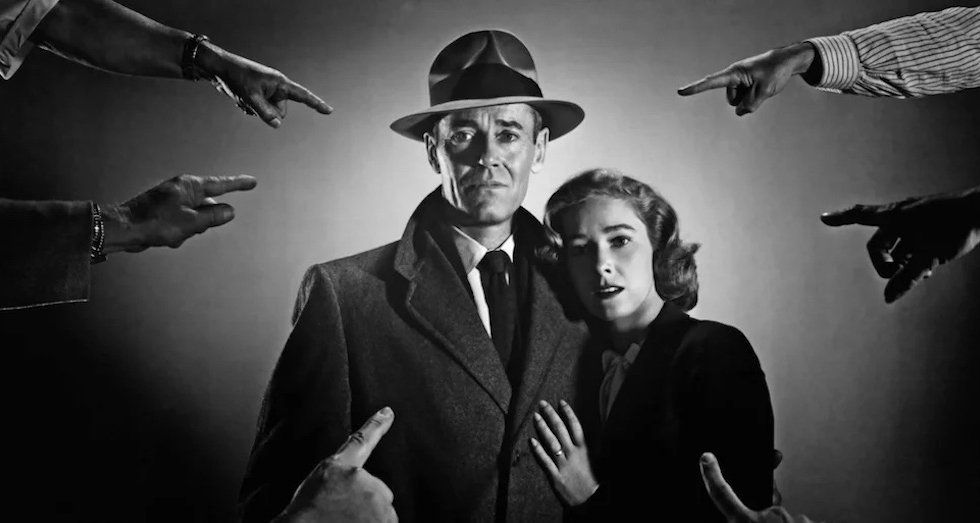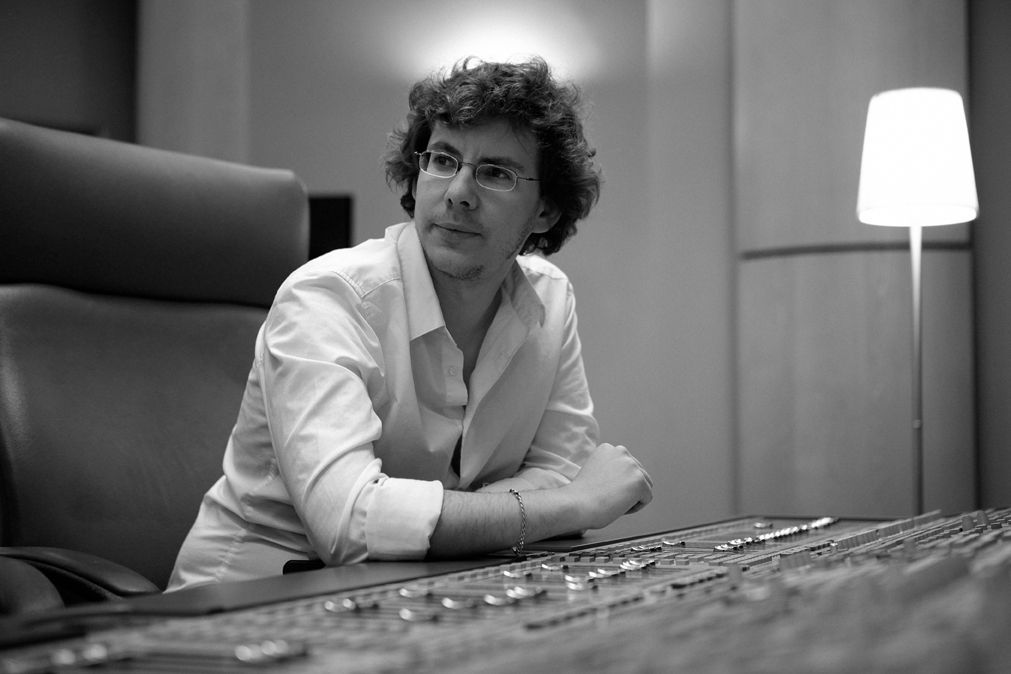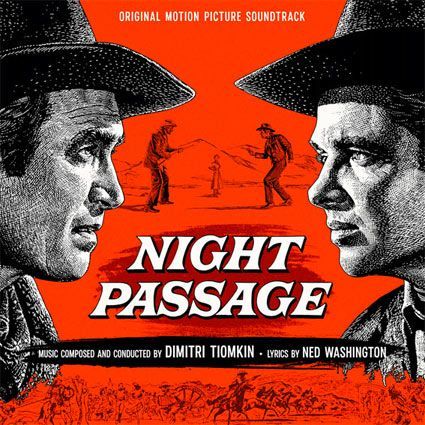The Wrong Man

« The Wrong Man » (Le faux coupable) est le dernier film que tourna Alfred Hitchcock pour le studio de la Warner en 1956, après une série de long-métrages incluant « Rope » (1948), « Under Capricorn » (1949), « Strangers on a Train » (1951), « Dial M For Murder » (1954) ou bien encore « I Confess » (1953). Après « The Wrong Man », Hitchcock retournera ensuite avec la Paramount Pictures et Universal Pictures, pour lesquels il tournera ainsi quelques uns de ses films les plus célèbres comme « Vertigo » (1958), « Psycho » (1960), « North by Northwest » (1959) ou bien encore « The Birds » (1963). « The Wrong Man » est l’un des rares films d’Alfred Hitchcock à avoir été adapté d’une histoire vraie, inspirée du livre « The True Story of Christopher Emmanuel Balestrero » de Maxwell Anderson (qui a d’ailleurs co-écrit le scénario du film avec Angus MacPhail) et de l’article « A Case of Identity » d’Herbert Brean paru en 1953 dans le magasine « Life ». L’histoire resta même quasiment inchangée pour le film, un souci incroyable de réalisme totalement anti-hollywoodien et très moderne pour l’époque. Le film fut d’ailleurs salué dans un article publié dans les Cahiers du Cinéma en 1957 par une critique particulièrement élogieuse de Jean-Luc Godard et une autre de François Truffaut parue à la même époque. « The Wrong Man » évoque ainsi l’histoire vraie de Christopher « Manny » Emmanuel Balestrero (Henry Fonda), un modeste musicien de jazz qui travaille en tant que contrebassiste dans le Stork Club à New York, et qui décide un jour de se rendre au siège de sa compagnie d’assurances afin de demander un prêt pour payer les soins dentaires à sa femme Rose (Vera Miles). Mais sa vie bascule soudainement lorsque la réceptionniste qui le reçoit l’identifie formellement comme étant l’auteur du braquage de la banque survenu il y a quelques temps. Peu de temps après, Manny est emmené par la police et interrogé dans les locaux de la 110ème brigade new-yorkaise. Manny clame fort son innocence et tente de convaincre ses accusateurs qu’il est lui-même victime d’une terrible erreur d’identité, mais la machine judiciaire, implacable, est déjà en route et le destin de Manny semble désormais bien sombre. Sa femme Rose ne supporte pas de voir son mari traîné ainsi dans la boue et tombera par la suite dans une grave dépression nerveuse, l’obligeant à être internée quelques temps dans un hôpital psychiatrique, s’accusant elle-même d’être responsable des malheurs de son mari. Quand à Manny, il devra livrer une longue bataille judiciaire aux côtés de son avocat maître O’Connor (Anthony Quayle) afin de réussir à prouver son innocence, malgré le fait que toutes les preuves semblent l’accabler. « The Wrong Man » a donc été conçu par Alfred Hitchcock comme une sorte de fiction documentaire retraçant point par point l’histoire exacte de Christopher Balestrero. Si le concept n’a rien de bien surprenant aujourd’hui, il était en revanche beaucoup plus rare et assez moderne en 1956, surtout dans la filmographie d’un cinéaste peu habitué à tourner des films inspirés de fait divers – à noter que le film débute par un monologue présenté par le réalisateur lui-même et annonçant le fait que le film raconte une histoire vraie.
Arborant un noir et blanc qui renforce le côté ‘archive/documentaire’ du film, « The Wrong Man » est un solide mélange entre suspense psychologique et drame intimiste, entièrement servi par l’interprétation bouleversante de justesse d’Henry Fonda et de Vera Miles. Mieux encore, le film est un pur chef-d’oeuvre de mise en scène, Hitchcock abordant ici un de ses sujets de prédilection, le faux coupable accusé à tort d’un crime (idée qui culminera dans « North by Northwest » en 1959) et le thème d’un homme ordinaire confronté à une situation extrême qui le dépasse totalement. Inspiré par l’esthétique réaliste du cinéma européen de l’époque, Hitchock expérimente lors de certaines séquences quelques effets comme le cercle en vue subjective que fait la caméra lors de la scène où Manny se retrouve enfermé dans une cellule, ou l’effet de rotation troublant et angoissant lorsque Manny se retrouve dos au mur, terrifié à l’idée de rester enfermé toute sa vie, effet qui traduit à ce moment là l’extrême détresse et la malaise du personnage d’Henry Fonda. Mais le film vaut surtout par l’incroyable performance de l’acteur principal, qui parle peu tout au long du récit et semble subir passivement la situation sans vraiment réaliser ce qui est en train de lui arriver. Hitchcock substitue aux mots tout un long travail passionnant sur les regards qui traduisent la grande détresse de Manny : le plan où Henry Fonda rentre dans le tribunal en bougeant à peine ses lèvres lorsqu’il aperçoit sa femme au fond de la salle rappelle encore une fois le mutisme du personnage principal, totalement désemparé face à une situation aussi improbable qu’irrémédiablement tragique. C’est grâce à cette force de conviction et à un regard incroyablement expressif et lourd de sens qu’Henry Fonda réussit à porter une bonne partie du film sur ses épaules, tandis qu’Hitchcock parvient à éviter la routine laborieuse du documentaire en maintenant un rythme continu et une mise en scène parfois très inventive. On ressent toutes les émotions que le cinéaste tente de nous faire partager ici, de l’angoisse lors de la séquence où Manny est arrêté et interrogé par les policiers, de la claustrophobie et de la détresse pour la scène dans la prison, et même du désespoir lorsque Manny annonce enfin la bonne nouvelle à sa femme à la fin du film, qui reste pourtant sourde à ce que lui affirme son mari et semble s’être totalement déconnectée de la réalité suite à un immense choc psychologique. Autre élément rare dans le film, la présence d’allusions religieuses, notamment lorsque Manny garde son rosaire dans sa main lors du procès, ou lorsque sa mère lui rappelle l’importance de prier pour avoir la force d’affronter ces terribles épreuves. Et bien sûr, on retrouve encore une fois chez Hitchcock des allusions au monde psychiatrique avec une scène de sanatorium qui renvoie clairement à « Spellbound » (1945), un monde qui semble avoir particulièrement fasciné le cinéaste américain. Le résultat est donc tout bonnement épatant, Alfred Hitchcock nous offrant avec « The Wrong Man » un très grand film et peut être même l’un de ses films les plus personnels et les plus déconcertants de sa période des années 50.
« The Wrong Man » a été mis en musique par Bernard Herrmann, grand complice d’Alfred Hitchcock qui signa là sa troisième partition pour un film du cinéaste après « The Trouble with Harry » (1955) et « The Man Who Knew Too Much » (1956). La partition d’Herrmann pour « The Wrong Man » n’est certes pas la meilleure oeuvre du compositeur pour un film d’Hitchcock, mais le résultat n’en demeure pas moins extrêmement réussi et représentatif de la qualité de la collaboration Herrmann/Hitchcock. Pour les besoins du film, Bernard Herrmann a décidé d’utiliser une instrumentation relativement restreinte, utilisant essentiellement un orchestre de taille moyenne principalement constitué d’une contrebasse soliste qui joue quasi systématiquement en pizz (pour évoquer le personnage de Manny, qui s’avère être un contrebassiste de jazz dans le film), d’un ensemble de cuivres incluant des trompettes en sourdine, avec quelques bois. En revanche, exit les cordes ici, qu’Herrmann a décidé de supprimer, préférant se concentrer autour d’une formation à vent (flûtes, clarinettes, clarinette basse, hautbois), avec cuivres, harpe et contrebasse soliste – ce qui permet aussi d’accentuer, par le choix de couleurs instrumentales exclusives, l’aspect noir et blanc du film, un peu comme Herrmann le fera avec les cordes sur « Psycho » en 1960. Le thème de « The Wrong Man » est exposé dès l’intro du film dans « Hitchcock », un motif de deux notes énigmatique et menaçant caractérisé par le son des trompettes en sourdine, principale caractéristique musicale de la partition de Bernard Herrmann. Hormis une pièce de jazz latino dansant dans l’excellent « Prelude » pour la scène dans le club de jazz où joue Manny au début du film (sans aucun doute le morceau le plus accessible de la partition de « The Wrong Man »), le reste du score repose essentiellement sur une atmosphère de mystère et de suspense assez minimaliste et toute en retenue. Dans « The Hallway », Herrmann suggère le début des ennuis pour Manny avec ses pizz entêtant de contrebasse et ses bois mystérieux et sombres, jouant bien souvent entre le grave et le médium, morceau qui trouve écho dans « 5 AM », tandis que « The Car » introduit à nouveau les cuivres en sourdine, avec un mélange de trompettes et de cors dont la sonorité caractéristique et particulière des sourdines apporte une ambiance vraiment très particulière au film d’Hitchcock. Herrmann explore d’ailleurs à plus d’une reprise le timbre assez spécifique des sourdines de trompettes ou de cors dans de nombreux passages de la partition, lui permettant ainsi de créer une atmosphère de trouble et de tension psychologique assez pesante à l’écran. C’est là la grande trouvaille d’Herrmann sur « The Wrong Man », qui possédait un sens décidément très personnel – et assez génial – des orchestrations, qu’il savait adapter systématiquement à chaque film qu’il mettait en musique.
« The Store » et « The Second Store » jouent essentiellement sur le registre grave des bois avec les pizz entêtant de la contrebasse solitaire, tandis que le motif de deux notes est développé lentement ici par un mélange de clarinettes basse assez inquiétant pour la scène où Manny se rend dans deux stores afin d’être identifié par les commerçants. « Fingerprints » reprend le motif sinistre avec la sonorité particulière des trompettes en sourdine dont le grincement aigu crée une sensation de malaise évidente dans le film, surtout dans la façon dont Herrmann fait progressivement monter les notes des trompettistes vers le registre aigu. Herrmann accentue même les effets de sourdine dans « The Cell I » et « The Cell II », où la musique renforce l’atmosphère de malaise et de tension, notamment dans les sonorités menaçantes des clarinettes basses et de la harpe dans le grave, sans oublier l’omniprésente contrebasse soliste et ses pizzicati entêtants associés au personnage d’Henry Fonda dans le film. Le motif de deux notes devient encore plus sinistre dans « The Cell II », où la musique bascule dans une anarchie quasi enragée lors de la séquence du malaise simulée par un effet de rotation inventif de la caméra lors de la scène où Manny est enfermé en prison, dos au mur. A noter ici la façon dont Herrmann combine deux groupes de trompettes en utilisant deux sourdines différentes, une « wa-wa » et une « bol » (appelée aussi « cup mute » ou « sourdine muette »). Les deux groupes de sourdine se répondent d’ailleurs tout au long de « The Cell II » à la manière d’un système antiphonique, à travers un crescendo assez terrifiant et angoissant. Dans « Police Van », Herrmann développe un motif de clarinettes/harpe aux notes descendantes qui renforcent la tension alors que Manny est emmené dans un camion de la police. A noter ici les effets plus agressifs de ‘col legno’ de la contrebasse (on frappe les cordes avec le bois de l’archet). A noter le retour des sonorités grincantes et inquiétantes des sourdines quasi stridentes dans « The Door », tandis que des morceaux tels que « The Tank/Handcuffs », « The Telephone » et « Bob » développent une ambiance plus psychologique et intime avec des harmonies de bois plus minimalistes et feutrées, très réussies dans le film. La harpe devient plus présente dans « Farmhouse », « Bridge » et « 3rd Floor », alors que Manny et Rose recherchent des témoins pour le procès. L’atmosphère sombre et pesante du début se prolonge dans « The Glove » et l’agressif « The Mirror », qui évoque la folie de Rose lorsqu’elle frappe Manny avec un peigne. Les trompettes en sourdine deviennent plus grinçantes que jamais ici, tandis que les clarinettes et les flûtes tentent de calmer le jeu tout en renforçant le malaise et la tension psychologique/dramatique de la séquence. On notera l’omniprésence des bois dans le thème mélancolique de « The Parting » et « Finale », dominé par un hautbois mélodique sur fond d’harmonies graves de clarinettes.
Bernard Herrmann signe donc une partition assez particulière pour « The Wrong Man », typique de sa collaboration avec Alfred Hitchcock. La musique reste assez minimaliste et retenue, bien mise en valeur dans le film, intervenant avec parcimonie lors des moments-clé du récit tout en demeurant assez répétitive et obsédante. Le score d’Herrmann apporte une vraie sensation de trouble et de malaise psychologique dans le film sans jamais en faire de trop, et ce grâce à une série de notes entêtantes et à une utilisation remarquable des couleurs instrumentales, et plus particulièrement des sourdines de trompettes. Voilà en tout cas un score assez intéressant et un peu oublié de Bernard Herrmann, à redécouvrir grâce à l’excellente édition CD de Film Score Monthly !



